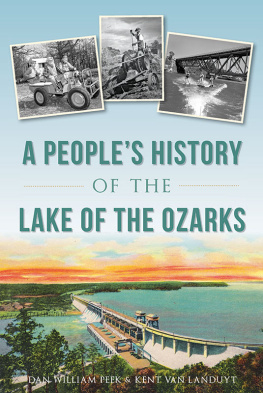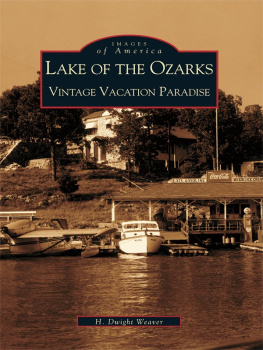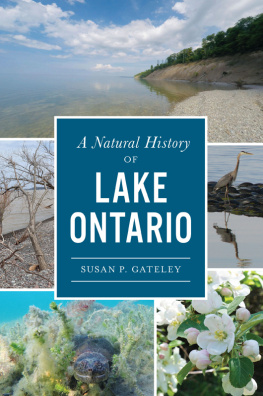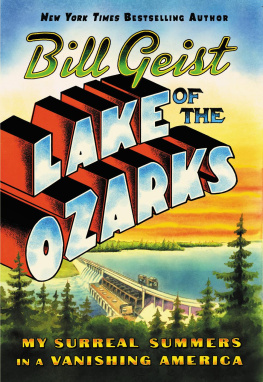

Published by The History Press
Charleston, SC
www.historypress.net
Copyright 2016 by Dan William Peek and Kent Van Landuyt
All rights reserved
First published 2016
e-book edition 2016
ISBN 978.1.62585.811.5
Library of Congress Control Number: 2015958241
print edition ISBN 978.1.46713.550.4
Notice: The information in this book is true and complete to the best of our knowledge. It is offered without guarantee on the part of the authors or The History Press. The authors and The History Press disclaim all liability in connection with the use of this book.
All rights reserved. No part of this book may be reproduced or transmitted in any form whatsoever without prior written permission from the publisher except in the case of brief quotations embodied in critical articles and reviews.

CONTENTS
ACKNOWLEDGEMENTS
The authors wish to thank all those who supported or contributed to this book, our wives and family members in particular for their patience and suffering and our intrepid text consultant, Pippa Letsky, as well as our editors at The History Press, Ben Gibson and Darcy Mahan, for their invaluable advice and assistance. The following first readers, friends, relatives and storytellers must be acknowledged, and we ask forgiveness in advance for any oversights. Thanks go to Craig Baer, Barbara Barnard, Robyn Burnette, Pat Calton, Camden County Historical Society and Museum, Joe Carter, Kathryn Cunningham, Emma Dornan, Terry and Darlene Farmer, Bob Hall, Pam Harlan, Cindy Hart, Carol Holt, Lake Area Chamber of Commerce, Joyce Mace, Maple St. Antique Mall in Eldon, Howard Wight Marshall, Miller County Historical Society and Museum, Missouri State Archives, Morgan County Historical Society and Museum, Jody Newman, Sally Oxenhandler, Lola Hook Rice, Karen Smith, Mary Stansfield, Wendy White, Kay and Lonnie Joe Williams and William W. and Dorothy Williams.
Disclaimer: Neither the publisher nor the authors are responsible for websites (or their content) that are not owned by the publisher or the authors.
INTRODUCTION
It may still be a custom of some rural folk, as it was in earlier times, to take a plant clipping from the old homeplace when moving to a new or other place. In the Ozarks, the most common such clippings were probably that of the lilac, swaddled in mud to be planted in the soil of the next home or farmstead. Lilacs are a durable bush, and it is likely some of those born of such clippings from the lands and homes that were submerged by the creation of the Lake of the Ozarks in 1931 still blossom where the families removed came to rest.
I know of this custom because it was common to my familyI am a fifth- generation Ozarker. My fathers family came to the Arkansas Ozarks from Tennessee after the Civil War, in which they had sided with the South. My great-uncle Dan Peek was justice of the peace in Snowball, Arkansas, in the early twentieth century.
I came of age in Morgan County, Missouri, which rims the Lake of the Ozarks. Family legend has it my father worked as a laborer in the construction of Bagnell Dam.
My mothers family name is Manes (may-ness). My grandfather was Daniel Boone Manesso named as was a fairly common custom of his day. The Maneses are a Scots-Irish and Welsh clan of the sort called Old Stock American by some cultural historians. My branch settled in Pulaski County, Missouri, in the early decades of the nineteenth century. Two of six Manes brothers, Baptist preachers all and initially brush arborists, constructed a wooden chapel known as the Manes Shed in 1840. The Manes brothers were past military age when the Civil War broke out. Though Southerners, they were Unionists, and family lore states they could not bring themselves to oppose the government their parents and grandparents had fought to establish. It is said, however, their sons served in the Missouri State Guard, a Confederate militia.
Some discussions or terminology in this telling of the story of the Lake of the Ozarks may be somewhat obscure or construed more of local description than by general usage and therefore require some advance notice.
Properties that front the water at the Lake of the Ozarks are often referred to as first tier lots. Second tier lots are just behind these, and third tier lots are those that are separated from the lake by the other tiers or by obstructions.
The designations central Ozarks and interior Ozarks as used herein refer to the regions adjacent to and on either side of the major divide or watershed (the Ozark Divide) popularly described as the lengthy level ledge that is the roadbed of U.S. Route 63 as it passes through the Missouri Ozarks. The region host to this storythe tri-county areais crossed by another divide running eastwest generally trailing Missouri Highway 52 and the old Rock Island railroad right-of-way.
The tri-county area (also: three-county area) consists of Missouris Morgan, Miller and Camden Counties. The designation predates the Lake of the Ozarks and is culturally ingrained. As an example, the Tri-County Lodging Association, a promotional organization, completely ignored the existence of Benton County, which also borders the lake. Although thus separated, Benton is correctly included in geographic or academic description of the Lake of the Ozarks region.
The southwest Missouri Ozarksthe White River region and Shepherd of the Hills Countryis referred to as the exterior Ozarks in these proceedings.
The distinction between the interior Ozarks and the exterior parts is significant because although the regions share a common culture, there have been significant differences in development of infrastructure, commercial organization and the promotion of tourism.
It was the exterior Ozarks that occupied the interest of folklorists and writers of former daysthe Arcadian view of the mountains. The contrast between the two Ozark regions can be highlighted with reference to the way these outside observers characterized the exterior Ozarks population as a cows not plows culture. As will be noted, the interior Ozarks of the same eraroughly mid-nineteenth century to mid-twentieth centurywould aptly be described as a hogs and logs culture.
Also needing definition is a term employed by this narrative from the Lake of the Ozarks regional speech: true local. This is a self-referential description that usually indicates an ancestral lineage in the lake area exceeding three generations or so. The differential is to those who arrived in the lake area after development had begun in earnestthe 1960sand often implies these newcomers have not done right by the place and its people. It would not be incorrect to assume the term arises from a lasting sense of ambivalence if not outright animus toward the newcomers.
A NOTE ON THE WRITING OF THIS BOOK
My initial interest, which arose from research for my book Live! At the Ozark Opry, was concerned with the cultural and social history of the Lake of the Ozarks. But as I approached the end of a second draft, I had not yet discovered an articulation of the key to the description of the social organization of the lake area. The tri-county region encompasses in square miles an area over half the size of the state of Rhode Island. Yet there is no central regional government, and neither the state of Missouri nor the small governing entities in the area have historically made much attempt to stand in lieu.
Next page










